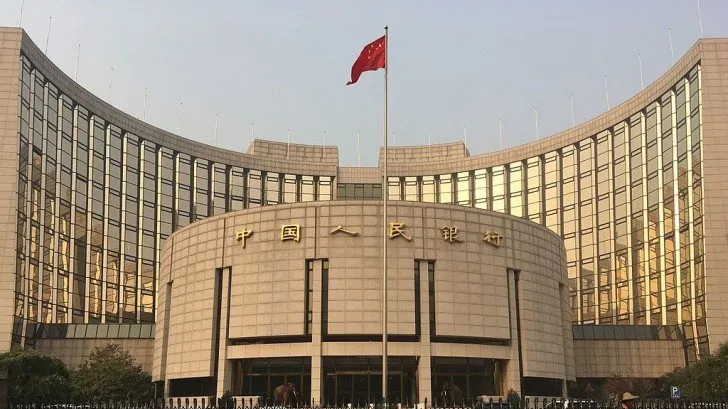
Could China’s financial infrastructure play 'white knight' to embattled Russia?
Any move to play saviour could also damage China, warns Natixis.
There’s only so much that China’s financial infrastructure can do to buoy their embattled Russian counterparts, and whatever support the Red Dragon can extend will have a short run, according to a new report by Natixis Global Markets Research.
Following Russia’s invasion of Ukraine, various markets, including the US, the European Union, UK, Japan, and even Singapore have announced that they are cutting off a number of Russian banks and Russia-related financial transactions. Chief amongst these sanctions is some Russian banks being cut off from the Society for Worldwide Interbank Financial Telecommunication (SWIFT), the global messaging network for cross-border payments.
Also Read: Singapore to block certain Russian banks, financial transactions
Following this, all eyes turned on China, which has financial ties to the country—most notable being its over $23.7b (RMB150b) swap line between the People's Bank of China (PboC) and the Central Bank of Russia (CBR).
In a report, Natixis noted that Russia’s probable pivot to China in order to support its financial woes can only offer respite, not a long-term solution.
“Our take is that the space is limited in the short run. Over time, it can become a second-best, but possibly a far-distant second best as it is increasingly unlikely that Western economies will continue to engage wholeheartedly in China’s financial sector if Russia jumps on it as a solution to its sanctions,” said Alicia Garcia-Herrero, chief economist, Asia Pacific, Natixis.
Also Read: Uncertainties arising from Ukraine invasion threaten Asian banks’ asset quality: analysts
CIPS as a SWIFT replacement a no-go
One key question, according to Natixis, is whether Russia can use China’s own Cross-Border Interbank Payment System (CIPS) to bypass SWIFT sanctions. The answer is no, according to Natixis.
CIPS is illiquid, the report said, with only 13,000 transactions processed per day. This is only 5% of the over 240,000 processed by the Clearing House Interbank Payments System (CHIPS), the most widely used international payment system currently.
The number of foreign financial institutions linked to CIPS also remains very limited.
CIPS itself is still included in the SWIFT ecosystem, as it still runs on the SWIFT messaging system. Whilst work is reportedly in progress to develop an alternative messaging system to SWIFT, it is not yet fully operational, Natixis’ Garcia Herrero said.
“Over time, the ban on selected Russian banks in using SWIFT may also have implications on the approach Western regulators take on CIPS, including a potential regulatory backlash given that CIPS will potentially include those entities sanctions under SWIFT, especially if transaction data is not shared,” she added.
Swap line a respite, not a solution
The only obvious option is the swap line between the PBOC and CBR. The CBR also has the equivalent of $90b in reserves at the PBOC in renminbi. But this is reportedly not enough since it is not a convertible currency and accounts for only about 2% of global transactions.
And whilst the PBOC could potentially set up a swap line in USD dollar to provide liquidity in hard currency to Russia, there is an obvious credit risk in doing this, according to Garcia Herrero.
“It seems more plausible that CBR uses its deposits in RMB at the PBoC to finance imports from China and even for the swap line eventually if its RMB reserves are drawn down,” Garcia Herrero said.
But again, this is not a permanent fix. The total annual bilateral trade value was US$107b as of 2020—which means that Russia’s reserves at the PBOC could be depleted within a year.
Depletion of Russia’s RMB reserves can even come earlier since Russia will clearly opt for increasing imports from China settled in RMB as opposed to those from EU, Russia’s largest trading partner by far, Garcia Herrero said.
e-CNY a dark horse for Russia?
Another solution that Russia could possibly be considering involves the use of PBOC’s digital currency, the e-CNY. Based on a centralised ledger, it allows cross-border transactions to bypass SWIFT, which could be a win for Russia amidst sanctions.
But e-CNY’s reach and use remain limited, according to Natixis. Currently, it is only intended for domestic retail payments, apart from a few memoranda of understanding (MoUs) that have been signed with a small number of economies. Russia has not signed such an MoU so far.
The use of e-CNY might also damage demand for the ruble, and Russia is seen as not desperate enough to abandon its own free-falling currency for an untested one, according to Natixis.
*****
You May Also Like:




![Lorem Ipsum [ABF 1]](https://cmg-qa.s3.ap-southeast-1.amazonaws.com/s3fs-public/styles/exclusive_featured_article/public/2025-03/a_hand_pointing_to_a_futuristic_technology_5b87c9d0e3_1.png.webp?itok=2w0y1WhS)


![Cross Domain [Manu + SBR + ABF + ABR + FMCG + HBR + ]](https://cmg-qa.s3.ap-southeast-1.amazonaws.com/s3fs-public/styles/exclusive_featured_article/public/2025-01/earth-3537401_1920_4.jpg.webp?itok=WaRpTJwE)







 Advertise
Advertise

